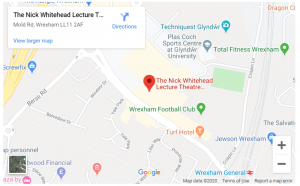SOARIZON, the integrated drone operations technology provider has formed a strategic partnership with CG Labs, experts in the capture and processing of data.
Based in Milton Keynes, UK, CG Labs works across many different sectors including industrial, construction, agriculture and events specialising in visualization, modelling and measurement, where technology and data manipulation deliver a new standard in accuracy and efficiency.
The partnership will involve the two companies collaborating on strategic opportunities to provide data processing solutions, giving SOARIZON customers a quality end-to-end data acquisition and processing service.
The partnership will provide SOARIZON customers with pre-flight consultancy on the best methodologies for data acquisition, as well as first class post processing capability that far surpasses the current go-to systems that utilise cloud processing.
Services available to SOARIZON customers include: Thermal Condition Reporting, LiDAR manipulation, 2D orthomosaics, 3D models, Digital Elevation, Surface and Terrain Models. All hosted on an accessible, user-friendly platform.
Streamlining the end-to-end process of gathering data by unmanned air systems in this way can save businesses time and cost, whilst maintaining full oversight of all drone operations and ensuring that all output is fully secure, therefore, minimising exposure and risk in data quality control and assurance.

Michael Oliver, Head of SOARIZON said of the partnership: “We are delighted to be working with CG Labs to introduce new and exciting capabilities into our service ecosystem. This partnership will bring valuable data processing services to our customers, helping them to further streamline their end-to-end drone operations. Like SOARIZON, CG Labs has ambitious plans to innovate and continuously improve. This partnership will help us to unlock the true potential of data acquired by drones for business and organisations of all sizes.”
David Cummins, Executive Director of CG Labs said: “We jumped at the chance to partner with the SOARIZON team. We are excited to be able to share our global processing capabilities and innovation with SOARIZON customers. Our tools will allow them to transform data into more useful insights that can add significant value to their own clients. Furthermore, as a customer of SOARIZON ourselves, we have found that we are able to streamline our own drone mission workflow, increasing our efficiency, safety and accountability, meaning that we save time, effort and money.”
The two companies will now work together on offering joint services and testing the value of integrating this type of service into the core SOARIZON platform.
About SOARIZON by Thales:
SOARIZON empowers scaled UAS operations through its secure, compliant and efficient ecosystem. Combining best in class mapping capabilities, NOTAMs, airspace data, and full risk assessment tools, SOARIZON enables enterprises of all sizes to maintain a full view of all drone operations, from planning through to approval and delivery.
Find out more and sign up for free at SOARIZON.io
About CG Labs:
As a member of the CG Tech group, CG Labs focuses on helping traditional businesses unlock the many benefits associated with digitising their systems and services. Data captured for photogrammetry, or using laser scanners, thermal and hyper/multi-spectral sensors can be quickly transformed to provide the end customer with digital solutions that are easy to access and generate unique insights.







